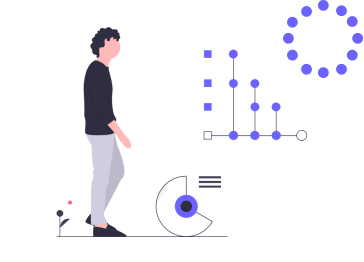According to the 2010 EC Competitiveness Report, Manufacturing is still the driving force of Europe's economy, contributing over € 6553 billion in GDP and providing more than 30 million jobs. It covers more than 25 different industrial sectors, largely dominated by SMEs, and generates annually over € 1535 billion (42%) worth of value added services.
The mission of the FITMAN (Future Internet Technologies for MANufacturing industries) project is to provide the FI PPP with a set of industry-led use case trials in the Smart, Digital and Virtual Factories of the Future domains, in order to test and assess the suitability, openness and flexibility of FI-WARE Generic Enablers, this way contributing to the social-technological-economical-environmental-political sustainability of EU Manufacturing Industries.
In order to accomplish the mission statement, the FITMAN project will deliver:
• A FITMAN Generic Platform for Manufacturing Industries, as a collection of several Generic Enablers Implementations belonging to most of the identified technological Chapters of FI-WARE project;
• A generic and flexible Trials Verification and Validation Framework, encompassing concepts, methods and tools for a technical and business assessment of the Trials
• An open-to-all FITMAN Phase III Package, to support FI-WARE PPP Phase III objective 1.8, Expansion of Use Cases, by providing access to FITMAN Reports and Prototypes for Phase III preparation and implementation
• Three FITMAN Specific Platforms for Smart, Digital and Virtual Factories, as a collection of several Specific Enablers Implementations belonging to the background of FITMAN beneficiaries and specifically derived from previous RTD projects in the Factories of the Future and Future Internet Enterprise Systems research
• Ten FITMAN Trials Platforms as instantiation of the selected Generic and Specific Enablers for ten industry-driven multi-sectorial Trials
• Ten FITMAN Trial Experimentations by deploying the FITMAN Trials Platforms in realistic Smart-Digital-Virtual Factories IT and business cases, as well as by assessing and evaluate evaluating the achieved results:
i. Smart Factories Trials: TRW (LE) automotive supplier – Safe & Healthy Workplace, PIACENZA (SME) textile/clothing – Cloud Manufacturing, COMPLUS (SME) LED smart lighting – Collaborative Production, WHIRLPOOL (LE) white goods manufacturer – Mobile workforce.
ii. Digital Factories Trials: VOLKSWAGEN (LE) automotive manufacturer – PLM ramp-up for reduced Time to Market , AGUSTAWESTLAND (LE) aeronautics manufacturer – Training services for blue collar workers, CONSULGAL (SME) construction – As-designed vs. As-built Interoperability, AIDIMA (SME) furniture – Mass Customised Production.
iii. Virtual Factories Trials: APR (SME) plastic industry – Collaboration valorisation, TANet (SME) manufacturing resource management – Networked Business Innovation, COMPLUS (SME) LED smart lighting – Collaborative Production,GEOLOC (SME) Machinery for wood industry – Project-based Collaboration.
